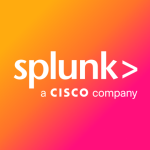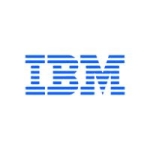It's a SIEM tool. Our process right now is to put as much data as we possibly can from all of our network devices into it. We use it as a centralized logging mechanism and the feature that is nice there is that it's agnostic against the types of devices you're using. I have firewalls that can log onto it. I have Linux boxes that can log onto it. I have Windows boxes that can log to it and I can collect a variety of logs from around the organization into it. I can analyze those logs, I can get detections against those logs and use them to take a look at the security footprint of the organization.
All of the different security centers within Microsoft are alerting systems like Azure Defender ATP, the Security Centers, and Azure. All of those products, when they generate incidents and alerts, send feedback into this tool. With this product, you get a single dashboard for managing your security footprint, both from the 365 Azure environment, as well as your on-premise environment.
From a security perspective, it has clearly improved our alerting in our incident management processes. We've also been able to improve other processes for network monitoring and for trouble remediation within the environment. Our infrastructure team and some of our application team are now plugging into the data that's in that tool as they can use it to find issues within their applications rather quickly - a lot more easily than the other tools that they've got, which has been a huge boom.
We also see that some of our help desk processes have now been informed by it. We have queries that run against the data set that's behind that same tool and they are built specifically for the help desk. For example, if a user's account has been locked out due to the fact that we have all of the data from all the different systems plugged into that tool, we can give the help desk a complete picture of authentication failures against that device so that they can quickly identify where the problem is and resolve the issue for the user.
This system has a list of data connectors and you choose what connects to it. By default, it has access to any of the core Azure data that you have access to, however, those are due to the fact that it lives in that environment. It would naturally have access to that data. Then, you choose which data sources you want to connect to it. Many of them are very easy to set up. They're within the 365 of the Azure portion and a point and click away with a lot of the third-party services. You click a button and do authentication and things connect right up. With some of the Linux, there are setups of Syslogs.
Microsoft has pretty good documentation. It doesn't take long. It's not hard to set up.
The biggest feature we've got out of it is visibility into our environment and what's going on across our estate. Being able to see, for example, anomalous RDP logins, to be able to see deviations from our standard traffic flows on the firewalls, things like that, give us insight into when we may have potential issues or a breach type situation.
The second thing you get is when you’re managing security within the Microsoft environment with Azure 365 you're on-premise you're bouncing between three or four or five, six different tools to do that. This centralizes the management of all of those. You get one pane of glass in all of those tools that give you a very easy way to see what's going on.
It also allows you to correlate between those tools. I can see if I have, for example, a low-priority incident in one tool. If I have another low-priority incident on the other tool made against the same user, that may force me to say, “Hey, maybe those things combined generate a higher level incident that I maybe need to put up for investigation.” That's the advantage of the tool.
The solution does not have specific features that have helped improve our security posture. Rather, the whole idea of making security a little bit easier while also being able to correlate data between multiple disparate systems has, as a whole, improved our security posture overall.
We’ve got process improvement that's happened across multiple different fronts within the organization and within our IT organization based on this tool being in place.
We were tracking in the neighborhood of 20 to 30 incidents a month coming out of one or two source systems within the environment. What Sentinel has given us the ability to do is move up. We're now evaluating somewhere in the neighborhood of 10 to 12 a day.
They're much more robust as a product. What we've been able to do is tune the alerts so that the things that are common, that are false positives that we see all the time, we've been able to filter those out and give ourselves this complete picture as things change and work but we're filtering out the standard data sets. There are things we’re going to look at and walk away from as we know they're false positives.
In terms of receiving false positives, it does take some work to tune the environment, to get it to get rid of all those false positives. It's not ridiculous work, however. I didn't find it to be the hardest problem. It took us a couple of months, doing an hour or so a day to clean them up. Going through that process offered a tremendous amount of learning about the environment. In looking at those false positives, you start to learn things about how people use the environment - things that we didn't realize before. That's extremely valuable for a security team to understand how your assets are used and what your users are doing.
The end users are barely involved in the process. They see our security team more proactively reaching out to them when they may have a problem. For example, I may have a user who has got an excessive amount of login failures against their ID and it's coming from, say, a mobile phone. We'll see that in the SIEM and what we'll do is reach out to the user proactively. Maybe they've been seeing lockout events, or, most likely, they have been seeing lockout events but they haven't quite figured out what's going on and we'll be able to proactively go to them and say, “Hey, we're seeing this, here's the device it's coming from and here's the action you should take and see if we can fix the problem.” It's given us the ability to reach out to the user. In some cases, it's an incident where we want to reach out, get more information from the user to understand whether it was them or not. In other cases, we're reaching out to them proactively and helping solve problems for them that they may or may not even be aware they're having.
Microsoft has a number of detections that they bundle with the product and there's a number of detections that are out against GitHub that are available. We have more and more of those going out every day. Microsoft periodically is releasing more updates. I love the fact that they're giving it to us. They're giving us the queries so we can plug them right into Sentinel.
We have to do very little editing of the plugins, however, I would love to see the ability to have those queries immediately, as Microsoft updates them. They need to have a streamlined process for updating them in the tool and knowing when things are updated and knowing when there are new detections available from Microsoft.
I've used the solution for two years.
The solution has been extremely stable. We haven't had any downtime that I can recall.
The scalability is great. It's all backed by the log analytics infrastructure. All of the data that we stuff in it is stuck with the log analytics retention times and data storage capabilities which scale wonderfully.
We are using it pretty heavily. At this point, we're plumbing pieces of data from all of our systems into it. We're actively in it every day.
We're constantly adding new data sets too.
I haven't used technical support yet.
In general, the Microsoft technical support unit is okay. There are times when you get help and it's wonderful and there are times when things are not as good. It's not what I would consider the best support I've ever received. That said, they're trying. They could work on their response times.
We did not previously use a different solution. We did a little bit of data consolidation, however, nothing at this level.
We adopted Sentinel as we were looking to mature our security footprint. We started looking at tools that could help us do that, and Sentinel was very easy to dig into, primarily due to the fact that you could bite little pieces off at a time. I didn't have to consume a massive cost. I could throw a little bit of data and consume at a pretty minor cost and prove its value before I started increasing my cost.
The initial setup is very easy.
It's a point-and-click Azure environment. You just click the button and say "yep, I want this."
The solution does not need a lot of maintenance. Once you have the log analytics infrastructure configured, as in your retention times, et cetera, there's your maintenance of the systems that becomes the analytics that you're using. There's a little bit of work that needs to be done there. That was the part that needed some streamlining, however, that's about it. It's managing your rules and your playbooks, et cetera, that needs to be handled.
It's hard to measure ROI on these types of processes. I can't give hard numbers on what the return is. What I can say is that the organization is much better off having this tool in place than not having it in place. The fact is we are improving processes around the organization and the visibility. We recently had some huge vulnerabilities in Exchange that were being breached, and knowing that we have tools like this in place that have detections to help us establish whether we were having an issue or not was useful. The product helps to make us aware of issues and we're not guessing and not spending too much time digging.
We did evaluate other options. Most had a larger acquisition cost associated with them. That was obviously a big factor. The other thing that helped the decision was that we live in a Microsoft-centric environment and most of the Microsoft tools were prebuilt and correctly connected very easily.
The product is part of the Azure platform - now the Microsoft platform. It's all fully managed by Microsoft at that level. We're using it as a SAFe solution.
I'd advise potential users to take a good look at your analytical rules and feed it with data. The more data you give it, the more valuable it becomes.
I'd rate the solution at an eight out of ten.













